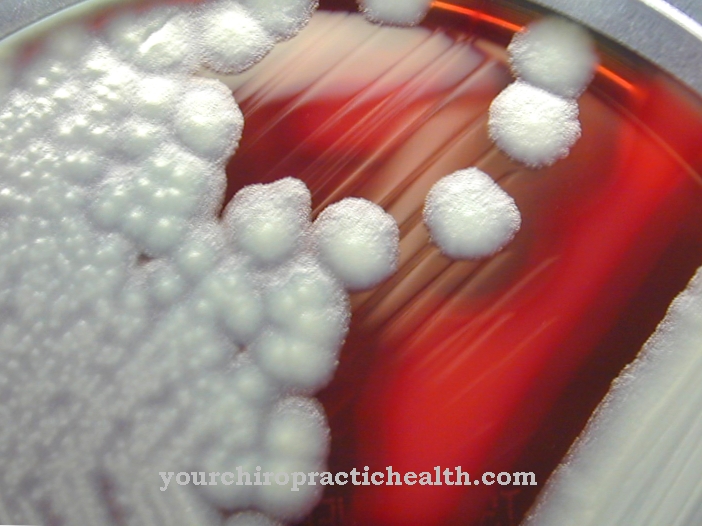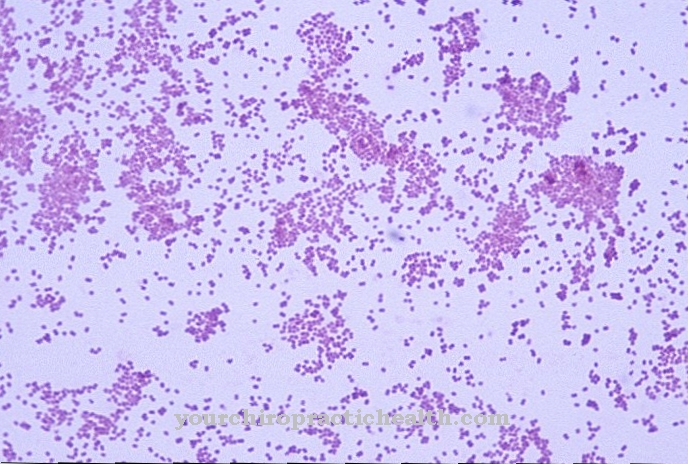As Campylobacter is a bacterial genus from the Proteobacteria division and the Campylobacteraceae family. In addition to species that inhabit the intestine as commensals, the genus also includes pathogenic bacteria. Campylobacter jejuni and Campylobacter coli are considered to cause Campylobacter enteritis.
What are Campylobacter?
Within the bacterial division Proteobacteria and the class of Epsilonproteobacteria, the family of Campylobacteraceae is listed under the order Campylobacterales. Campylobacter is a genus of bacteria in this family. The generic name is derived from the Greek, where the name literally means "crooked rod". This means that the species from the genus Campylobacter are rod-shaped bacteria with a corkscrew-shaped shape, which are also known as spirils.
The genus shows gram-negative staining behavior, is microaerophilic and polar flagellated. In 1963 the bacterial genus was described by Sebald and Veron. Until then, individual types of Campylobacter were called microaerophilic vibrions. It was not until the 1960s that they were no longer included in the Vibrionaceae family.
The cell size of the bacteria is between 0.2 and 0.8 by 0.5 and five micrometers. They often carry a single scourge on one end. Some representatives of the genus are, however, also bipolar flagellated and thus have flagella at both ends. This enables them to move actively. In culture, the bacteria of the genus sometimes change from corkscrew-shaped to cocci-shaped.
Many Campylobacter species have catalase and oxidase. Those of the species Campylobacter sputorum, concisus, mucosalis and helveticus do not have catalase. Medically, the species Campylobacter fetus subsp. fetus, coli, jejun subsp. jejuni highest relevance.
Occurrence, Distribution & Properties
Organotrophy is the term used to describe the need for reducing agents made from organic matter, which provide energy-providing redox reactions in the energy metabolism of chemotrophic organisms. In chemotrophy, the energy requirement of an organotrophic living being is covered by exergonic metabolism. The species of the bacterial genus Campylobacter are all chemoorganotrophic. They are so-called nitrate breathers. Accordingly, they operate an oxidative energy metabolism by utilizing nitrate as an oxidant. In aerobic respiration, oxygen is used instead of nitrate. Due to the utilization of nitrate, the Campylobacter genus is not dependent on O2. Amino acids and individual intermediate products of the tricarboxylic acid cycle, which can be oxidized by nitrate, are used as electron donors.
Just like oxygen, the genus Campylobacter does not use carbohydrates for their metabolism. For this reason, the individual species of the genus are considered to be microaerophilic. They are therefore aerobic microorganisms that grow ideally with low oxygen concentrations in the growth environment. Oxygen concentrations of less than 20 percent are considered optimal.
Species such as Campylobacter jejuni live in drinking water or in food, among other things. Most species tolerate low temperatures, but die at higher temperatures. For this reason, for example, thorough cooking of meat can kill them. The intestines of living beings represent an ideal environment for the types of intestines. Some Campylobacter species occur as commensals in the intestines of cats, dogs, cattle and humans. These species do not cause disease. They do no more harm to the host than they do to him.
Other species of the genus are pathogenic and can therefore cause various diseases. The genus has a zoonosis. This means that the bacteria can be transmitted from humans to animals and in the opposite direction. For this reason, close contact with contaminated animals is a possible source of infection. In addition, the pathogens are often found in foods of animal origin, particularly in raw cow's milk, raw meat and raw nuts.
The bacteria of the genus Campylobacter are usually transmitted from person to person in the form of smear infections. This means that the bacteria can be transmitted when a contaminated person is touched.
You can find your medication here
➔ Medication for diarrheaIllnesses & ailments
The best-known and most important pathogens of the genus Campylobacter are Campylobacter jejuni and Campylobacter coli. Both types of bacteria are primarily associated with diarrheal diseases. For example, they can cause so-called Campylobacter enteritis, which corresponds to bacterial gastroenteritis. After salmonella gastroenteritis, this form of enteritis is the second most common form of infectious diarrhea in Germany.
The peak phase of occurrence is summer. Since bacteria of the Campylobacter genus are widespread in the animal kingdom, infection usually occurs through contact with contaminated animal-based food. The most common causes of infection are the consumption of raw milk and contaminated poultry.
The incubation period of the infection is up to five days. Thereafter, the symptoms are relatively unspecific, which are mainly characterized by headache and body aches as well as fever and fatigue. These initial symptoms are followed by a severe form of diarrhea. Often it is bloody diarrhea, which can be associated with colic-like pain. The diarrhea can last up to ten days.
A small proportion of affected patients develop reactive arthritis weeks later, which manifests itself in the form of arthralgia (joint pain). In a few rare cases, Campylobacter enteritis has also been discussed as a possible trigger for Guillain-Barré syndrome. This is a polyneuritis of the peripheral nerves and spinal nerve roots. The cause of the occurrence has not yet been conclusively clarified. A connection with Campylobacter is conceivable. The apparently connected occurrence of enteritis and the syndrome does not necessarily have to describe a causal relationship, but can be due to the general weakening of patients after enteritis.

















.jpg)



.jpg)

.jpg)




